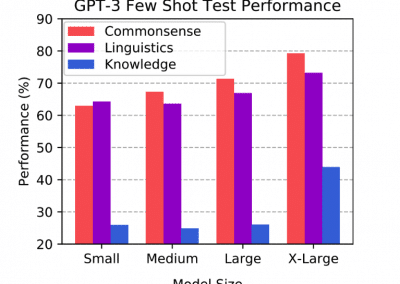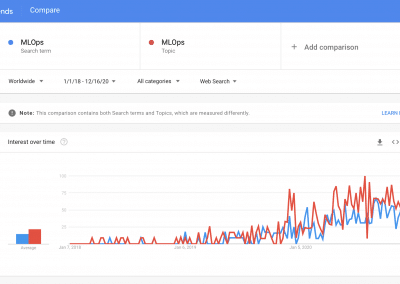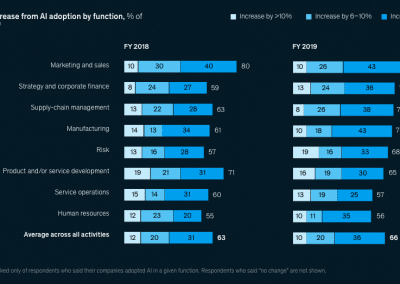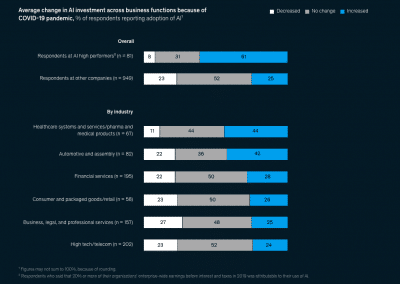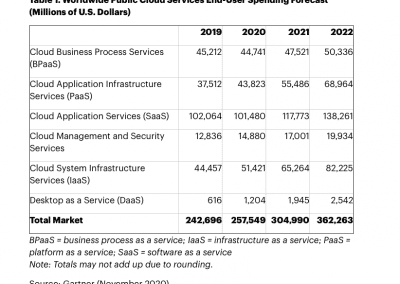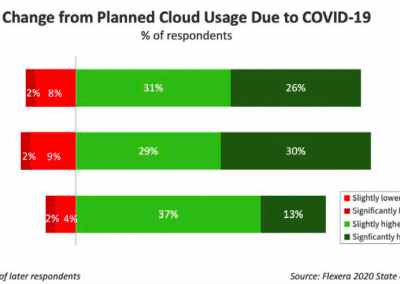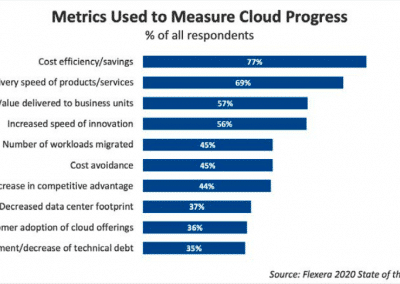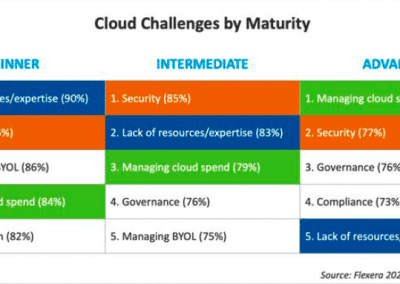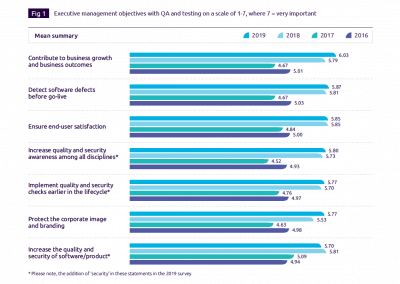2020 Review (2/2): The Technology Landscape
In this second of two 2020 Review articles, let’s look at how several big technologies evolved during the year.
As we have seen last week, the major impact of the pandemics was an accelerated movement of businesses into digital/online. The big winners were remote communications and work, ecommerce and logistics/delivery, online entertainment, and pharma. On the opposite side of the spectrum, big losses have been carried by travel and tourism, commercial real estate, and traditional retail and entertainment.
Does this have an influence over various technologies’ development? Absolutely!
While we can’t possibly look into each and every technology, programming language or framework, we picked several of the most important ones: AI/ML, Cloud, QA (and a bonus: JavaScript).
2020 Trends in Artificial Intelligence / Machine Learning
If you’ve been blown away by OpenAI GPT-3’s show-off back in July, it’s for a good reason: the quality of its generated text is as close to human as it has ever been (with pretty much the same good and bad sides of a human). This comes from a huge leap from anything that has been done before: the model works with 175 billion parameters (with an estimated training cost of ~$10M) and brings impressive advancements on vectors like “Commonsense” and “Linguistics” (although “Knowledge” is still to catch up).
While GPT-3 is “just” humanly good at writing text (and oh! translating and debugging from one programming language to another), its effect on businesses does not appear to be immediate. However, it is just the tip of the iceberg for what happens in AI/ML.
According to the State of AI Report (3rd Edition, published October 1st, 2020) AI/ML is getting close to maturity in a lot of industrial areas:
- In biology, there were more than 21,000 AI-related papers in 2020, which marks the third consecutive year of 50%+ year-on-year growth.
- Pharma companies appear to start deploying AI for drug discovery, which leads to an AI-discovered drug beginning its first trial in Japan.
- AI-based driverless automotive industry keeps maturing/consolidating, with significant investments into cameras, video, LiDAR and motion traces; and a shift in focus from perception/visuals to motion prediction.
As AI/ML gets closer to maturity, we can also see a shift from “how to build models” (R&D) to “how to run models” (Operations), i.e. the rise of MLOps (DevOps for ML).
Surprisingly (or not), McKinsey’s survey shows an increase of investment in AI during the pandemics. This is variable from one industry to another, but the trend is still significant.
2020 Trends in Cloud
By now, cloud is everywhere and pretty much “the new normal”. If you expected it to do well in 2020, then you were right. For organizations which wanted to accelerate their digital transformation, cloud assets delivered scalability and cost efficiency.
According to Gartner’s Forecast on Cloud Spending (published Nov 17, 2020), cloud spending increased slightly in 2020, and should grow by 18% in 2021.
There are good reasons for this increase in spending. By further investing in the cloud, companies can hit three vital targets:
- optimize IT costs,
- support (or cope with) remote workforce,
- build resilience.
We can see pretty similar findings in Flexera’s 2020 State of the Cloud Report: regardless of their company’s size, most of the survey respondents indicate an increase in cloud usage:
And of course, we see the same reasons:
- efficiency and cost savings,
- rapid delivery of products/services,
- an overall higher value for the business units.
At Berg Software, we have seen an increase in cloud installation and migration services, and we recommend clients to put up the best infrastructure to serve their users’ needs
2020 Trends in QA
If back in its infancy, the main point of QA was to find defects, its maturity comes with a strong emphasis on business growth, end-user satisfaction, cost control, and security. If we were to summarize these challenges, it would be: “QA needs to deliver value at high speed”.
According to Capgemini’s World Quality Report, executive management is looking at no less than seven important objectives of QA and testing:
This really is a balancing act, that builds on top of several trends:
Balancing QA in agile and DevOps methodologies means that testing can happen during the lifecycle, parallel to development, without a closing phase. This comes with new approaches, such as:
- intelligent ecosystems that derive appropriate test requirements,
- lightweight test methods,
- automated mechanisms to integrate tests in the continuous delivery pipeline.
Artificial intelligence and machine learning have the potential to make QA even smarter – either by identifying and prioritizing issues or by optimizing testing for both efficiency and effectiveness.
As we have already seen, AI/ML needs training on huge amounts of historical data, which -given the right amount of time and high level of adoption- should lead to smarter, real-time testing.
(Intelligent) Automation has been around for 20 years, as it can deliver better control and transparency, better detection of defects, and decreased costs.
However, 2/3 of companies face automation challenges caused by (too) rapid changes of their applications. Many times, the root cause is that manual steps (and higher maintenance costs) are still included in automated test processes.
The main security trends refer to implementing security checks earlier in the lifecycle, with a potential increase in the security of final products and software.
It is quite surprising then, that across the board, security appears to be the least automated testing type (13%, which may be caused by some steps that really have to be manual).
QA costs can be influenced by several factors:
- cloud (see above) comes with scalability opportunities that increase efficiency,
- virtualization streamlines infrastructure while optimizing its utilization and lowering the costs,
- agile and DevOps deliver better integration,
- shift-right testing enables quicker detection of defects, fixing while in operation, and rapid updates.
At Berg Software, we have continuously adapted to the changes in the QA landscape. Our QA engineers are permanently in touch with clients, to ensure their end-users’ satisfaction.
Bonus 2020 Trend: JavaScript
On its 25th anniversary (Dec 4th), JavaScript is quite literally running the world. From computers to phones and even some appliances, JavaScript is currently a massive ecosystem that influences many areas of software development.
It should come as no surprise then, that according to RedMonk Programming Language Rankings, JavaScript is still the most used language:
For Berg Software, JavaScript is one of the main technologies that we use in Enterprise Web Applications for multiple industries.
_
How do you see the 2020 technology landscape? Got any experience that you can share? Let us know!


